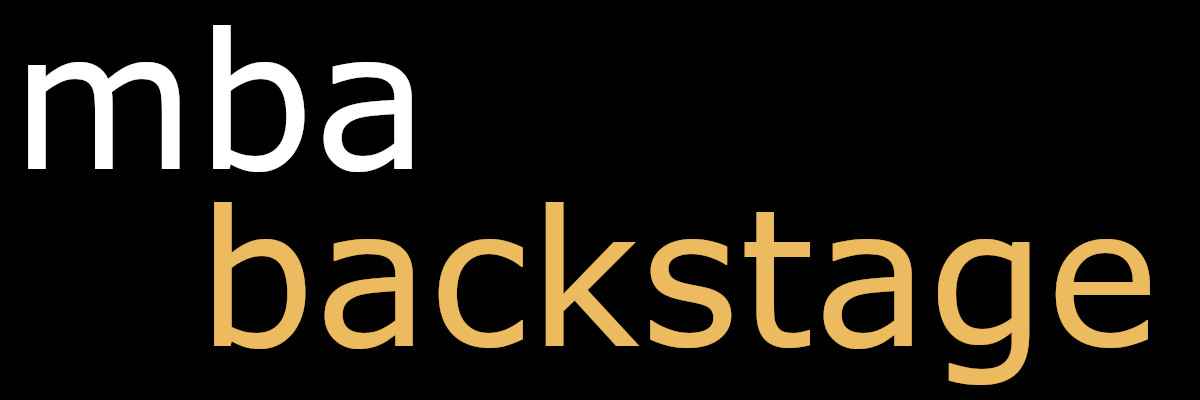How to show Career Vision?

You need to know where your career is heading, even if you don’t know…
A badly kept secret of MBAs is that most people end up following a different career path than the one they described in their application. Schools know this but still test you on it. Why? Well it allows them to check you are capable of articulating a clear and realistic vision to a future employer. It also shows you have done research and are committed to doing an MBA and understand how it can help you. At the end of the day, they want you to be happy with your investment! (and tell all your friends how great the school is :D)
Career Vision is typically demonstrated via your essays and then later confirmed/refined during the interview. There are a number of rules to keep in mind, as explained below.
Be specific about your vision and explain your motivations
Questions to ask yourself: Which companies are you aiming for? Which department, function or role? What do you want to achieve there? Why do you want to follow that career path?
Knowing you want to go into consulting or banking is not enough. Not only have admissions officers heard that a million times before (Zzzzzzzzz), but it also shows a lack of reflection on the topic. Show you have done research, that you have spoken to people on that career path. Name specific companies and roles where you see yourself working (note that only naming one company is not enough, since it either shows a lack of research or that your vision is too rigid – see our paragraph below on making your career vision flexible).
Explain why you are targeting a particular path. Note that salary increase is not a great reason. Even if it is a large driving factor for you it certainly won’t impress the admissions officers.
Don’t be afraid to talk about several steps in your career plan. As long as you limit the number of steps to 2-3 (beyond 3 you may appear to be a but of a control freak!), this shows a lot of personal reflection and maturity. For example you may see yourself in Venture Capital eventually but plan to start by building a solid financial foundation in Investment Banking before founding a company in Fintech and then eventually transitioning to VC. Make sure that you explain clearly why each step is important and what you will learn from it. And surprise-surprise, the more you link it back to what you will learn in the MBA, the better.
Show you are aware of the challenges of that path too. The admission officer will be looking for potential weaknesses to test at the interview stage, so ideally you should limit that list with your initial application. Think about how someone could pick holes in your career plan and show that you have thought about the major ones, in your essays.
Make the vision realistic – show that it fits with you and your past
Questions to ask yourself: Do you have the skills to get a job and do well there? How will your previous career help you on that journey? Why didn’t you try to follow that path earlier?
Again, remember the importance of coherence. It is essential to link your Career Vision to your career so far and your Employability Skills. The more adapted your leadership style or soft skills are to the particular path you’re aiming for, the better. Research what skills your target firms look for and make sure you demonstrate those skills in your application. If you are going from a non-analytical career path to a highly-analytical one, such as consulting, and your GMAT quant score is not great, you may struggle to convince the admissions committee.
Keep in mind that you don’t necessarily have to aim high! On the contrary, avoid mentioning companies that are very hard to get into unless you are a stellar applicant (e.g. Goldman Sachs, Morgan Stanley, McKinsey, VC firms etc.). Your dream job may be to work for McKinsey but if your pre-MBA career and test scores look like you will struggle to get a job there, then target more accessible firms in your application. The committee is much more likely to believe that story. Once you are in to your dream business school you will still be able to apply to McKinsey anyway, just like everyone else. But as a side note, you should also temper your personal expectations. The majority of top-MBA students typically apply to McKinsey and only a few of them get offers!
Even if your vision is very different from your career so far, you need to explain how your past experience and choices have gradually led you to your current career vision. It’s ok if your career vision has evolved over time, you just need to explain that and show maturity of reflection in the process. However, you do need to find some links and natural progression. For this focus on the transferable skills (e.g. during your career in Change Management you realised that you loved understanding what influenced people’s behaviour and how people make decisions etc. This led you to discover a strong interest in marketing)
Show that it requires an MBA, ideally from the school you’re applying to!
Questions to ask yourself: Do you really need an MBA for this career vision? Why now and not in a few years? Why an MBA from this particular school?
Obviously, you need to show how the MBA will help you in your Career Vision. Show that people who are in that track have MBAs. Talk about how some specific skills you will acquire in the MBA will help you perform in that role, etc. Ideally you should also show how the specific school you are applying to will fill these criteria. We’ll cover that in the Cultural Fit section below.
You also need to show that now is the right time for this transition. The committee should get the impression that you will soon reach a plateau in your development, but you haven’t reached it yet! Schools are particularly suspicious of candidates who seem to be applying because they’re bored or “stuck” in their current position. For young candidates (less than 3-4 years experience) the timing of your application is particularly important since schools will be keen to test if you are “mature” enough for the MBA.
Show that you are flexible on your vision, but not too flexible
Questions to ask yourself: What if you don’t get your dream job? How will you take advantage of all the rest the school has to offer?
Having a career vision shows direction and maturity, but there is a danger in being too committed to it. Schools want to maintain their employment stats, and the last thing they want is graduates ending up unemployed because they are too specific about what they want (Yes for us the grass is always greener elsewhere, so get used to it!). They also want to know you will enjoy the full benefits of an MBA and not just focus on a narrow subset of it.
Ideally you should have a Plan A that you are 70-80% sure you want to do (but don’t provide probability statistics in your application, unless you’re a robot), but also show that you are keen to explore other opportunities. Don’t worry if in reality you are only 10-20% sure and need the MBA to be able to explore your options. However, you do need to have sufficiently thought about your Plan A to be able to write convincingly about it and defend it in your the interview.
Read on
This post is part of the Application Strategy Guide. Click the link to return to it.
- How to show Employability Skills (link).
- How to show Cultural Fit (link).
- How to show “Pitching Factor” & Final Application Strategy Tips (link).
Or if you’re tired with strategy, and want to switch to execution, have a look at the following:

0 Comments